
|
Pages: << Back 1 2 3 4 5 6 7 8 9 10 Next >> Interest in athletics resumed after the war with renewed emphasis on intercollegiate competition. In 1921 alumni, who were primarily responsible for the oversight of the program through the DePauw Athletic Board, formed a new advisory council of 100 men which met annually in Indianapolis and helped to recruit promising athletes. President Grose was moved to remind the university constituency that it "must not yield to the prevalent wild craze over athletics." The next year DePauw joined with other colleges and universities in the state, large and small, in forming the Indiana Intercollegiate Athletic Conference, which adopted the rules and regulations of the Big Ten Conference.
DePauw
still scheduled football, baseball, and basketball games with such
rising athletic powers as Notre Dame, Purdue, and Indiana University
for a few years. The need for better outdoor athletic facilities
was met by the gift of $25,000 by Ira B. and Mary H. Blackstock
in 1921 for that purpose. Two years later Blackstock Field was dedicated
in a football game with Franklin College on Old Gold Day, 1923.
Comprising a sodded gridiron and baseball diamond as well as a quarter-mile
track, it superceded the smaller McKeen Field, which was diverted
chiefly to intramural athletics.
President Grose spent the 1921-22 academic year in China on a special leave granted him for the purpose of gathering materials for a biography of James Bashford, the well-known Methodist bishop in that country. He published his findings in book form in 1922. Upon Grose's return to campus he devoted most of his remaining tenure as president to the successful prosecution of a million-dollar endowment campaign. Finally, in 1924 he was himself elected a bishop of the Methodist Episcopal Church and left Greencastle to take up his new post in China. He later returned to the United States to become the editor of a religious periodical in California. A final contribution to DePauw University was a short biographical sketch of Edward Rector published in 1928. Grose died in 1953.
To replace Grose the trustees sought an experienced college administrator, preferably a DePauw alumnus, who could attend to the internal affairs of the university at a time when enrollments were burgeoning and student unrest was rising. They turned to Lemuel H. Murlin, who had earned both a B.A. and S.T.B. from DePauw and had served as president of Baker and Boston Universities. At 63, Murlin was far older than any other president of the university at the time of election to that office and admittedly in poor health. He
accepted the post on the condition that he not be called upon to
undertake a financial campaign and undoubtedly looked upon it as
less taxing than the presidency of Boston University, which he had
just led through a period of major growth. His wife, the former
Ermina Falass, was also familiar with DePauw, having earned one
of the first Ph.D.s awarded by the institution and taught in the
preparatory department. The Murlins did not arrive on campus until
February 1925, when they moved into rented accommodations until
the new presidential home-a large Georgian Revival structure on
Wood Street purchased by the university-was ready for occupancy. |
Depauw University e-history | E-mail comments to: archives@depauw.edu

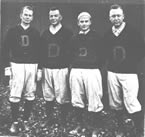

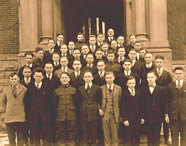
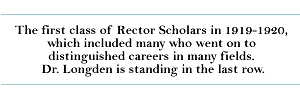
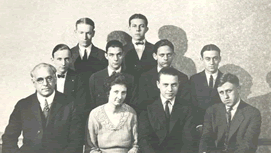
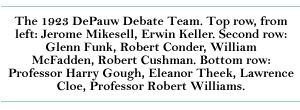
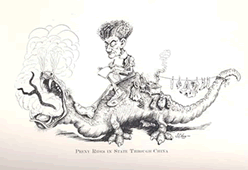
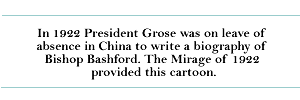
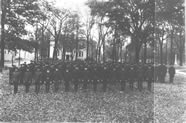 ______________________________________________
______________________________________________